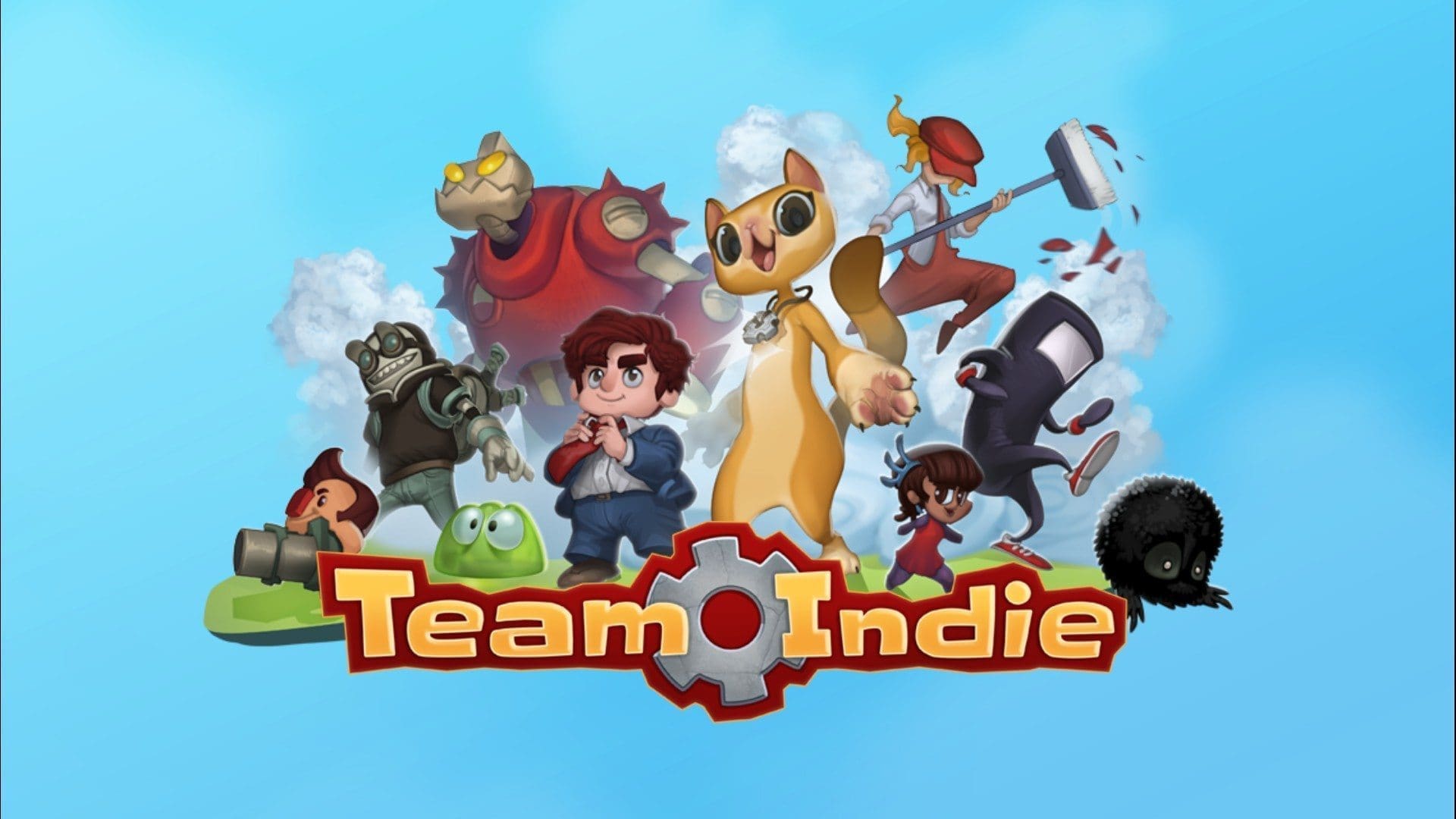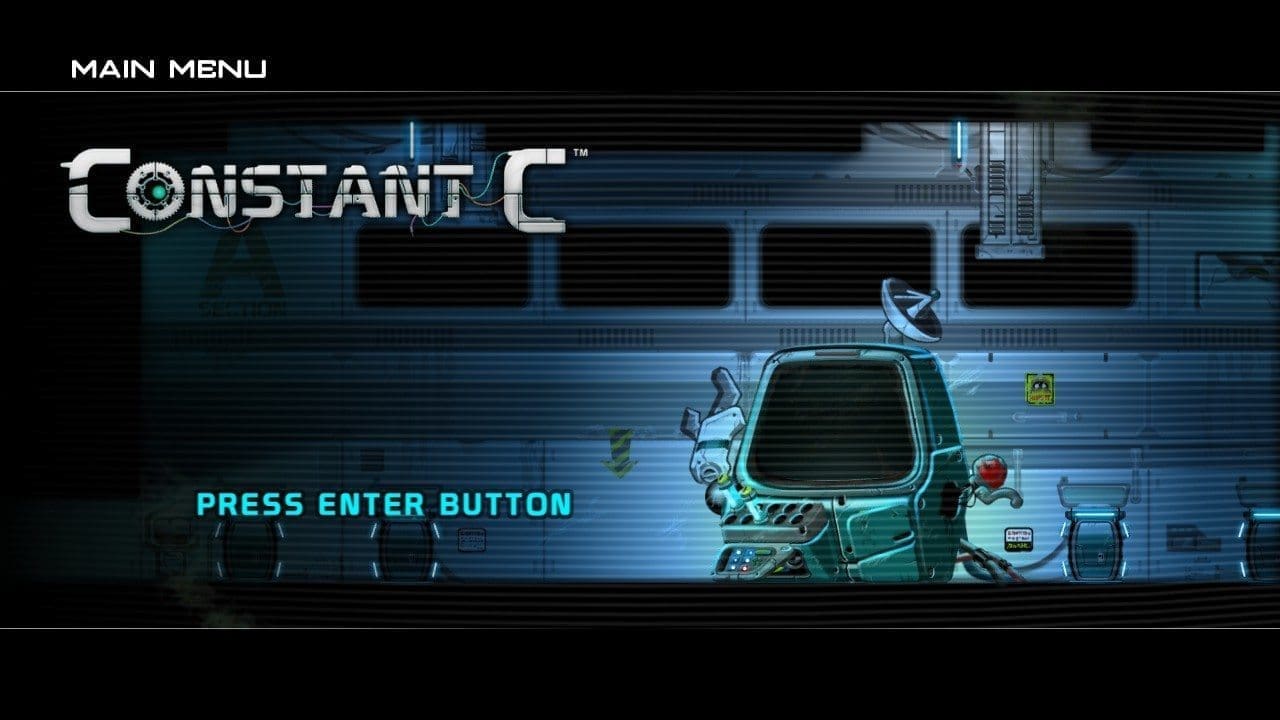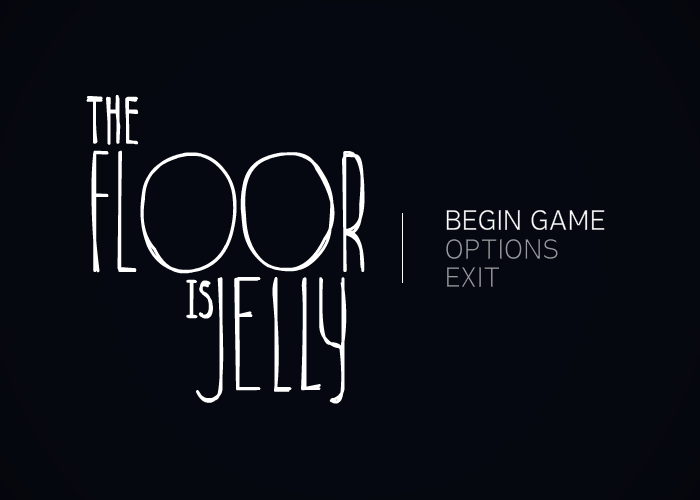
The Floor is Jelly is an artistic platformer with a unique twist; the floor is jelly. That may sound a bit obvious, but it’s true. The floor, and walls and ceilings all react to the player as if they were massive water beds, bending as you land on them and springing you back up. There is a lot more to this game than just that, but it stands as a constant theme throughout the game.
Gameplay
The Floor is Jelly is, at its core, a puzzle platformer. The game seems to draw a lot of inspiration from Fez, but it manages to stand out on its own as a great example of the genre. When you first start the game, everything about it feels awkward. Jumping is difficult and often you don’t end up anywhere near where you wanted to go. That would seem like a death knell for a platforming game, but the game does a fantastic job of easing you in to its unique mechanics. On the first few screens, you can mess up all you want and still generally get to where you need to go, but the difficulty ever so gradually increases as you refine your understanding of jumping around on jelly. The level design here is immaculate, and at no point does it feel either overwhelming or boring.
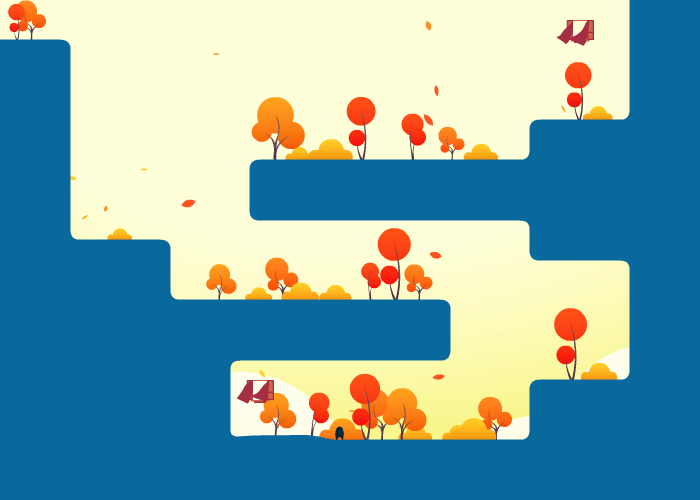
The game is broken up into discreet worlds, each with a unique theme. The visuals, sounds, music and mechanics of each stand out from the others and really give the world a fair bit of depth. For a game with almost no dialogue or story to speak of, the creator did an excellent job in crafting a world that really feels immersive. As you move from world to world, you will experience new challenges, and the worlds are just the right length so that as soon as you overcome the new challenges and really understand them, it’s over and you move on to a new world. At no point while playing the game did any of the rooms or challenges seem redundant, it was designed with a deft hand.
In addition to the standard fare of jumping from platform to platform as you navigate from one window to the next, the game world is teeming with secrets. Scattered about are various terminals that give odd responses to a set of standard prompts, and let you see how many terminals you have yet to find. There are 31 terminals in total, and I managed to find five of them playing through without looking for them. They are very well hidden, and each teases you with a command that cannot be executed until all terminals have been activated. While a single playthrough of the game is unlikely to last you more than five hours, trying to find all of the secrets seems like it would take weeks. There is a lot of replay value here, and the second time through it’s amazing how much easier navigating the world is.

Interface
The game has no real user interface to speak of, and it doesn’t really need one. There is no health, no lives, no map, just you and the world. The controls are a bit twitchy, but for the most part they are very responsive. All you ever really do is run, jump and occasionally use a door or interact with a terminal; the variety comes from the environment, not the character. As you learn to manipulate the floor and walls to fling your character across the map accurately and at high speeds, the game really puts an emphasis on fluid motion, and it works. It’s only the few times that it deviates from this formula that things start to break down.
There are a few rooms that don’t seem to fit with the feel of the rest of the world. Usually requiring very precise falling between spikes or repetitive bouncing to gain height. It’s not that these rooms are bad on the whole, they just require a much different approach than the rest of the game. For me, it brought the flow of the game to a screeching halt and felt more like a forced puzzle than continued exploration. Fortunately there are very few rooms like this in the game, so it doesn’t happen often, but that makes it all the more jarring when it does.
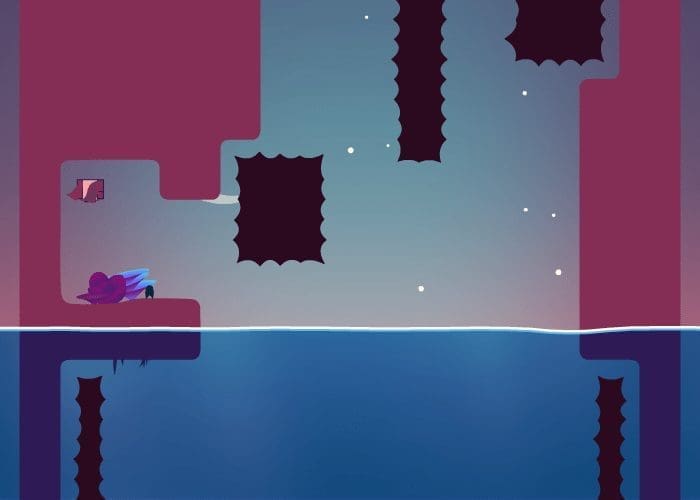
Towards the end of the game, things get a little glitchy. That’s not to say that there are bugs, it’s an intentional glitch complete with random flashing blocks and some experimentation with the rules of the game world. This is, by no means, a new or unique mechanic; many games use this as a way to get more leeway with either the story or the mechanics, and this game is no exception. As you navigate these glitched-out worlds, the jelly mechanic starts to change. I have mixed feelings about segments like this in games. I just spent the entire game learning how to deal with the floor’s consistency and the game alters it drastically? Some people are really into this type of thing, and I can see the merit, but in this case it was a frustrating experience. Some of the changes the game goes through are neat, and definitely tweak the existing formula in new and interesting ways. Some of them, though, are simply obnoxious, and I was very happy that they were only there for a short time.
Visuals
The game has a minimalist art style that works really well with the unique mechanic. Simple shapes, crisp lines, and solid colors paint a very pleasing picture. Everything has soft, round edges, which really fits with the whole floor being jelly thing. It’s quite impressive how varied and interesting the game world is with how little is actually going on. What’s most important though, is that the constant warping of the terrain and the bowing of the objects on it, don’t affect the visuals in any negative way. I think it was brilliant on the developer’s part to use this style, as any texture on the floor would have likely been either nauseating to watch or just have looked awful as it moved around.
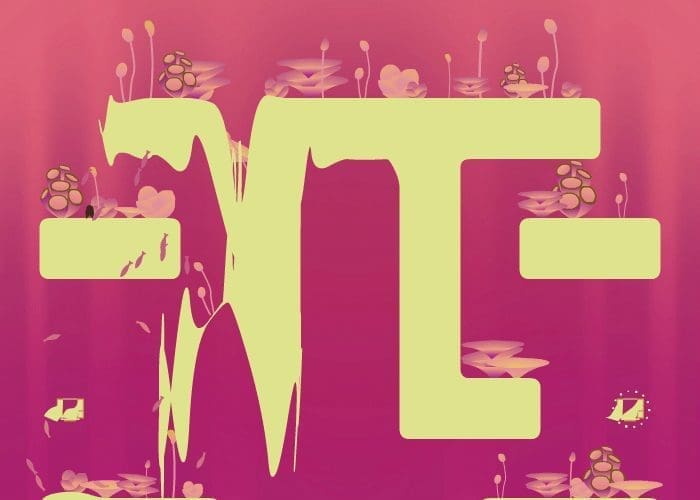
Each world has a very distinct visual style to it, using the same minimalist theme. The worlds all stand out from each other, and the frequent change in style keeps the basic aesthetic from getting stale. The game feels like a piece of art, and the pleasing undulations of the floor and walls as you navigate the world both give you a sense that you are having an impact on this world, and also add just enough gentle motion to the environment to help it feel alive. When the game starts, you actually have to paint it to life, so I’m positive this feeling was intentional. The game developer really refined their core idea here and it shines through in every aspect of the game.
Audio
As I’ve said before, this game has a very artistic flair to it, and the audio is no exception. Happy guitar tunes, somber piano melodies, and ambient background noises will keep your ears as engaged in the game as the rest of you. I can’t tell you exactly how many minutes of music there are, and honestly that’s a good thing. The score is diverse enough that it never gets boring or monotonous. Each different world in the game has its own distinct music, and the hub world that you visit most often relies on ambient background noises instead of music, so there’s hardly any repetition at all. The ambient sounds are particularly effective, and the two areas that used them were probably my favorite to listen to.
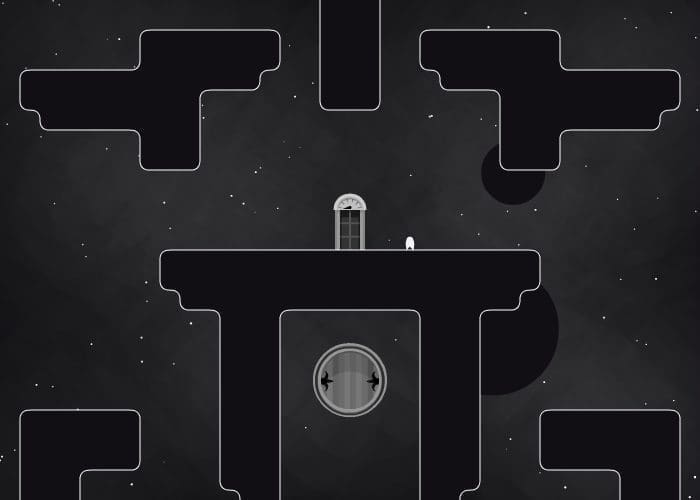
The sound effects are just as well put together as the music. Your character makes a nice bubbly sound every time you jump, and it’s not the same one sound effect over and over. In some of the worlds, the common sound effects even changed, most notably with the hub world that has an underground sewer feel to it where the jumping effect had a nice echo added to it. There is variety in the sounds you hear most often. In some worlds, the grass turns into bushes and trees as you walk over it, and the rustling noise there is just as effective as any of the other sounds. I actually took to making sure I walked over all of the grass as I played, in part because I thought it might do something, but also because just hearing the sound was relaxing and acted as a reward after getting through a difficult area.
Conclusion
There is no questioning the quality of this game. I’m always hesitant when games use minimalistic themes, as they are often used to mask laziness on the part of the designer. That is absolutely not the case here. Everything about this game, down to the smallest detail, is finely honed to make sure it serves exactly its intended purpose and nothing more. You can buy the game direct from the developer’s site, http://thefloorisjelly.com/, and at only $10 it is a phenomenal bargain. If you like art games, this game has it all for you. If you like platformers, this game will not disappoint. Honestly even if you don’t like either you will probably still enjoy this game, it’s just a good game, period.
[SlideDeck2 id=9271]
Ever since smashing my first goomba at four years old, I've been a video game fanatic. I grew up with games, and when the big studios started pumping out the same games over and over again, I turned my eye to where the real fun is. I haven't bought a game from a major publisher in years, and I want to share my love for the indie gaming community with you all. When I'm not playing or writing about indie games, I'm out there trying to make my own. Hit me up on twitter, @empyrealhell, for the latest look into this small but wonderful slice of gaming.


















